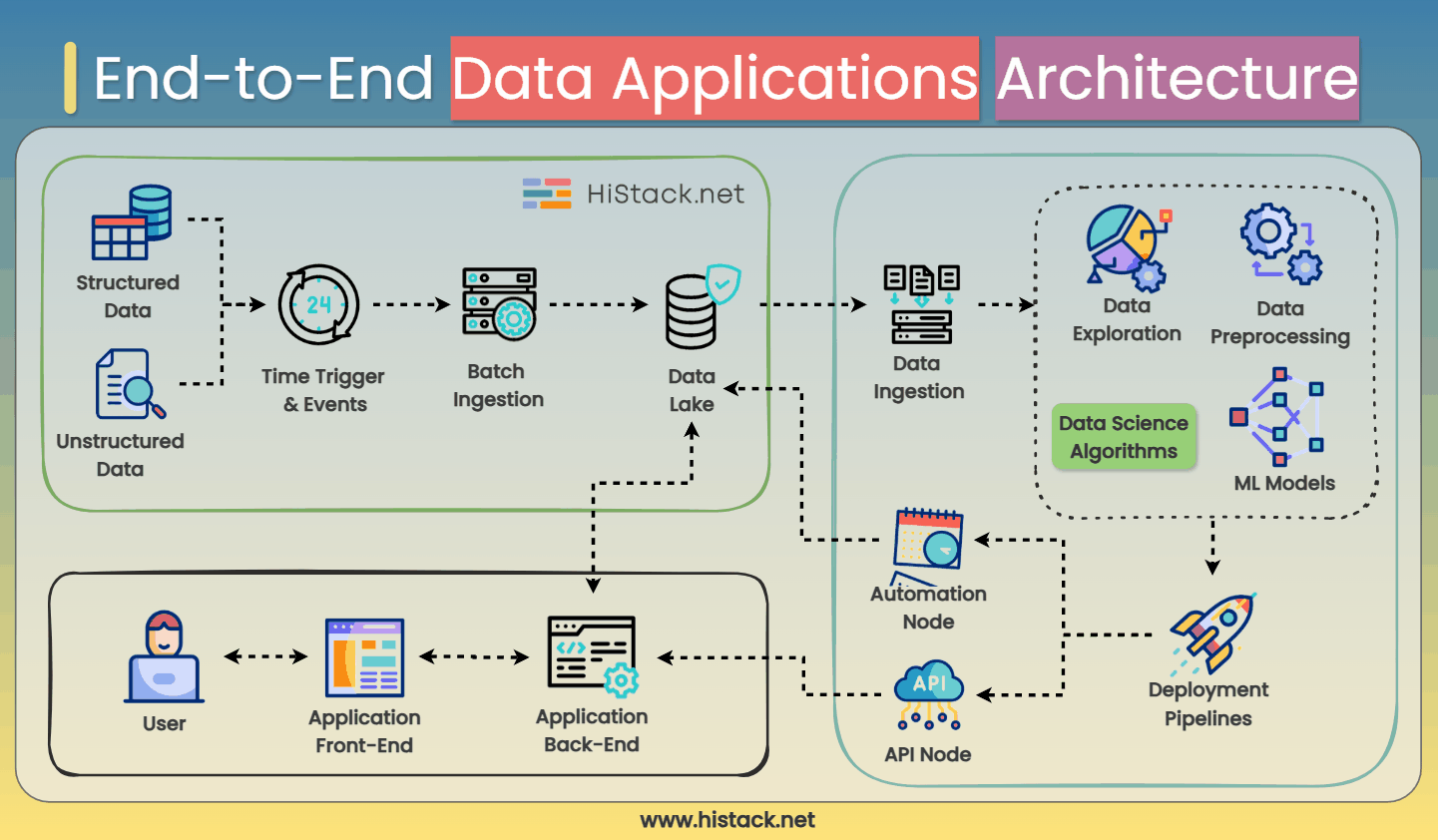End-to-End Big Data Applications Architecture
Big Data Applications Architecture
Data is the backbone of modern decision-making, driving everything from business strategies to AI-powered applications. However, raw data alone holds little value—it must be processed, analyzed, and structured into meaningful insights. This article breaks down an End-to-End Data Applications Architecture, explaining how data moves through a system from collection to deployment.
Data Collection and Storage
Organizations deal with various types of data:
Structured Data – Information stored in databases and spreadsheets, such as customer records or transaction logs.
Unstructured Data – Free-form data like emails, images, and documents that require additional processing before use.
Data collection is managed through time-based triggers or event-driven mechanisms, ensuring that new data is ingested at scheduled intervals or in response to real-time events. The data is then stored in a Data Lake, a centralized repository designed to handle both structured and unstructured data efficiently.
Data Processing and Preparation
Once collected, raw data must be transformed into a structured, usable format:
Data Exploration – Identifying patterns, anomalies, and trends in the dataset.
Data Preprocessing – Cleaning and normalizing data to remove inconsistencies and missing values.
Data Science Algorithms – Applying statistical and machine learning techniques to extract deeper insights.
Machine Learning Models – Training AI models to detect patterns and make predictions based on historical data.
This stage is critical for ensuring data quality and reliability before further processing or deployment.
Automation and System Integration
To maintain efficiency and scalability, automation plays a key role:
Automation Nodes – Manage workflows, schedule tasks, and ensure smooth data movement.
API Nodes – Provide interfaces for external applications to request and interact with processed data in real-time.
Automation reduces manual effort, streamlines data pipelines, and enables seamless integration with other business applications.
Deployment and Delivery of Insights
The final step is delivering insights to the right systems or users. This is achieved through Deployment Pipelines, which ensure that:
AI models are updated with new data.
Processed insights are integrated into business dashboards or applications.
Predictions and decisions are available in real-time or on demand.
Efficient deployment ensures that data-driven decisions can be made quickly and accurately, supporting business operations and AI-driven applications.


